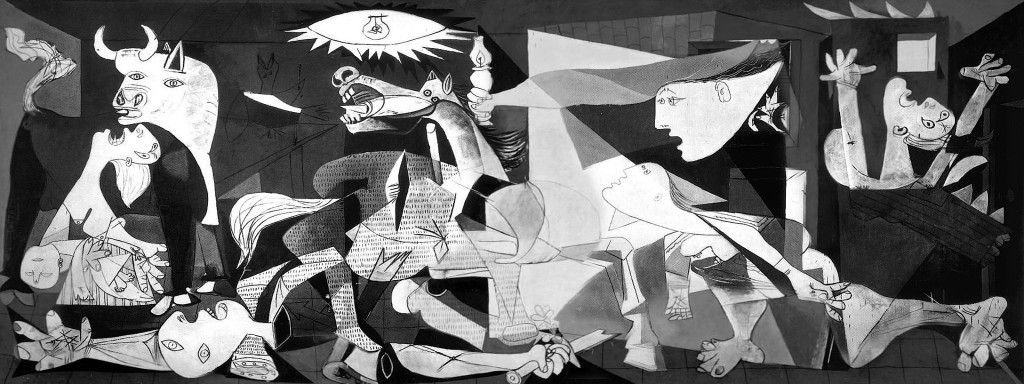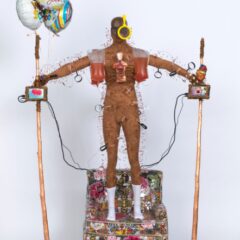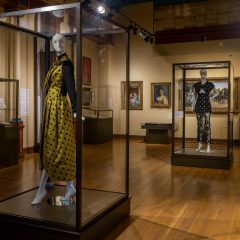
The Museum of Modern Art (MoMA) is closed now (this time for four months) for another building expansion which entails re-hanging the collection – which might be a good time to think about MoMA’s collection in our memories. I’ve always loved the permanent collections of numerous great museums because through the years I’ve been able to return to the same artworks with increasing knowledge and to judge the trajectory of my own understanding. For the museums I know best I can scan the galleries in my head, and do so repeatedly. The MoMA of my memory stretches over fifty years and two prior building expansions. And I find myself thinking of certain works that hung in the collection galleries in the 60s, 70s and 80s but have rarely, if ever, been seen during the past two decades. They are by artists of the second rank who were widely known during the period when their work was on extended view at MoMA.
Prior to the early 1980s a person went to museums like MoMA to see their collections, which evolved very slowly to account for recent acquisitions – and most of those eventually ended up in storage. Temporary exhibitions were occasional events. That has changed for museums everywhere. Visitors have become used to seeing something new during each visit. I am as guilty as the next person of chasing after these rotating, loan exhibitions – after all they monopolize the press museums receive. But on numerous occasions I’ve reflected that the time I devoted to them would have been spent more productively in the collection galleries.
The new, on-line archive, lists almost five thousand exhibitions; it will ultimately include 35,000. For many it includes catalogs, press material, checklists and illustrations – resulting in a hugely valuable archive of what was on view and when, although it somewhat confuses the historical record by including P.S. 1 exhibitions organized over three decades before its association with MoMA. P.S. 1 existed precisely because MoMA would not exhibit contemporary work by unknown artists. In contrast to the changing exhibitions, only some of MoMA’s installations of the permanent collection are illustrated and none include checklists.
MoMA’s permanent collection is more than a story of modernism; it is the story of modernism for visitors from around the world. Given the current prices of modernist artworks, MoMA’s story is unlikely to have any real competition for that status. So what hangs in MoMA’s collection galleries has real implications. It may not define the cannon, but it certainly contributes to it. The collection on view constitutes a body of artworks that contribute to the common knowledge of people interested in modern art.
The museum’s press releases indicate that the new installation will be considerably more diverse than those of the past and will emphasize multiple, concurrent narratives. It will also include works from multiple departments beyond painting and sculpture. Works on paper and textiles have different light requirements from most paintings and sculpture and are rarely left on extended view for more than six months. But I have always thought it odd that a museum devoted to modernism would maintain a separation of media, which implies a hierarchy – since one of the tenets of academicism that modernism specifically rejected was such hierarchy of media. Modernist painters and sculptors made stage sets and costume designs, ceramics, interior designs, furniture, rugs, textile patterns, posters, illustrated books and magazines as well as photography, fine art prints and films; exhibiting them together presents a more complete picture of their intentions and attitudes.
Of course I’m not thinking about Picasso’s “Guernica,” which in one section of my memories remains at the top of MoMA’s stairs, outside the collection galleries but positioned to greet everyone who entered. No one could object to the return to Spain of work commissioned to raise funds for the Spanish freedom fighters, as the artist wished. But what about those artworks demoted from the permanent collection galleries? I’ll mention a few, and I’d love to hear from others about the MoMA of their memories.
Gaston Lachaise had two life-size bronzes of nude women on permanent view after the building enlargement of 1985 – one at the top of an escalator, the other in the sculpture garden. I haven’t seen these monuments to female strength and fecundity in a while.
What about John D. Graham? Does his name ring any bells? He was an artist’s artist and a charismatic whose career included abstract works as well as paintings in the format of Renaissance portraits – all of women. They are unforgettable, if only for the women’s bulging and/or crossed eyes. A double portrait was on longterm view at MoMA.
John Kane? A painter from Pittsburgh who was considered to be an American Rousseau in some circles. He is known for small landscapes and paintings of children, but MoMA owns an a-typical self-portrait where the artist is stripped to the waist and set within a niche like a saint from a polyptych.
Anne Ryan was never a household name. She was a poet who turned to visual art in her fifties, initially making prints. She was deeply impressed by the work of Kurt Schwitters, and created small-scale collages, two of which hung in MoMA’s collection galleries during a period I have yet to determine.
“Modjesko, Soprano Singer” is far away the best painting I have ever seen by Kees Van Dongen, which is the likely reason it was exhibited for a time. Has anyone thought of him since it was taken down?
I can’t wait to see who will take the place of these artists in the upcoming presentation of MoMA’s collection.









